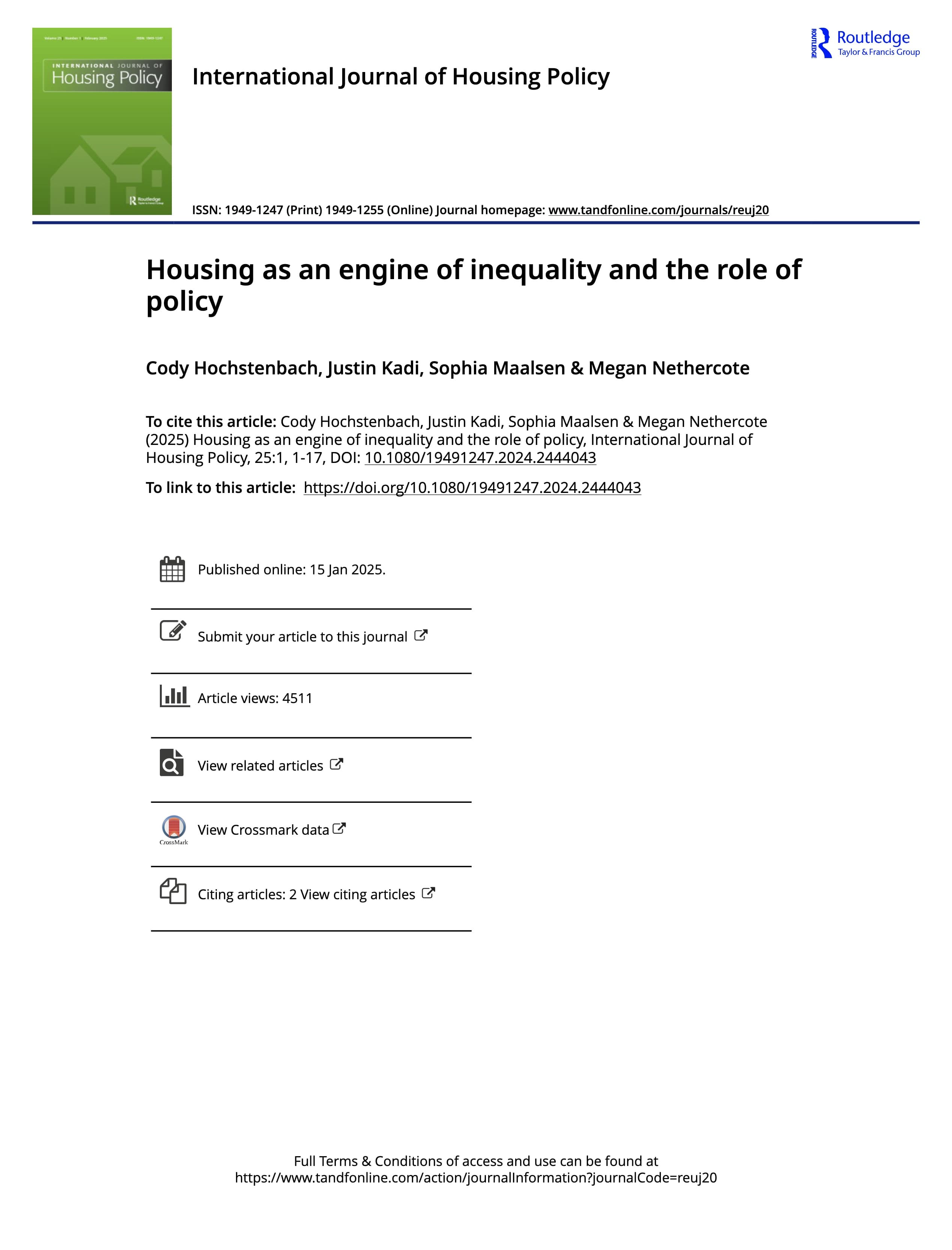AI-Generated Summary
Learn moreContext and Overview
The document titled "Housing as an engine of inequality and the role of policy" was published in the International Journal of Housing Policy, which focuses on housing issues and policies globally. The authors, Cody Hochstenbach, Justin Kadi, Sophia Maalsen, and Megan Nethercote, discuss how housing not only reflects socio-economic inequalities but also actively contributes to them. The paper highlights the ongoing housing crisis affecting various countries, including Australia, the Netherlands, and the UK, particularly in the context of rising rents and an increasing number of individuals facing precarious housing situations.
Rising Inequalities
The authors emphasize that housing is a significant driver of socio-economic inequality. They note that many renters are forced to move further away from their jobs and schools to find affordable housing. The consequences of the COVID-19 pandemic have exacerbated these conditions, with affordable housing options diminishing even in previously accessible regions. The paper presents data indicating that a growing cohort of young adults in these regions is facing a future of renting, marked by instability and insecurity.
Wealth Disparities
The document highlights stark differences in housing wealth accumulation between homeowners and renters. For instance, the top 10% of households in Australia, the U.S., and the UK hold a significant proportion of total net housing wealth (45%, 53%, and 39%, respectively). In the Netherlands, the top 10% similarly holds 40% of net housing wealth, with many lower-income groups either renting or facing mortgage debt. The paper points to the increasing financial burden of housing costs, which disproportionately affects lower-income individuals, thereby perpetuating income inequality.
Policy Implications
A critical aspect of the discussion revolves around the role of policy in shaping housing markets and inequalities. The authors argue that government policies have historically favored homeownership and facilitated the accumulation of housing wealth through tax incentives and mortgage credit access. They highlight how state interventions can either exacerbate or mitigate housing inequalities, depending on whether they prioritize homeownership over affordable rental options.
Housing Classes
The authors revisit the concept of "housing classes," which categorizes individuals based on their housing assets and the resulting class structure. The paper suggests that economic stratification is increasingly based on housing wealth rather than traditional employment metrics. It discusses how the intergenerational transfer of wealth through homeownership further entrenches these inequalities, as many first-time buyers now rely on parental support to purchase homes.
Conclusion
The document concludes by underscoring the importance of understanding housing as a central issue in discussions of inequality. It advocates for a more nuanced examination of housing policies and their social implications, particularly as they relate to sustainability and equitable access to housing. The authors call for ongoing research and dialogue in the field of housing policy to address these pressing issues and contribute to solutions that foster sustainable housing environments across Europe.
